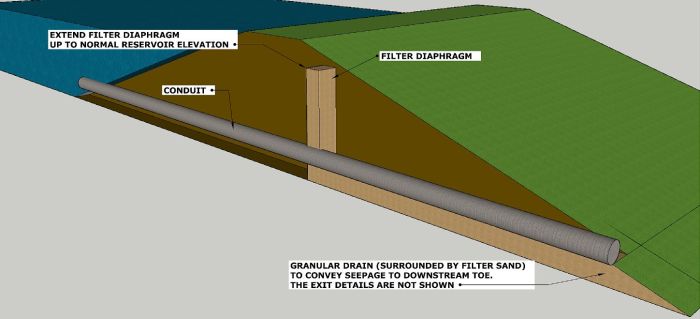General Information
Most older dams were built with the best construction and engineering standards available at that time, but much has been learned since then. The greatest advance in dam safety practice for earth dams is the implementation of engineered filters. Engineered filters, for all practical purposes, were not implemented in dam design until about the 1980s. Most dams constructed before this era likely do not meet modern filter design criteria to protect against internal erosion.
Failure due to lack of filters can take days or years and problems can develop in older dams despite years of good performance. Modern practice and guidelines dictate the use of zoned embankments that include, at a minimum, engineered filters downstream of earth cores and around conduit penetrations and toe drains.
From Dam, You’re Getting Old! – Understanding and Managing the Risks of Aging Dams , Western Dam Engineering 2016 🔗
A well-designed filter provides protection against possible defects in an embankment core. If a core contains pervious layers or through-going transverse cracks, a filter will safely collect seepage through these defects and prevent piping of the core.

Filters placed around conduits or other structural penetrations (commonly referred to as filter diaphragms) also provide protection against internal erosion or piping along the exterior walls of the penetration, where seepage is most likely to occur (See Seepage and Piping). Filters installed around conduits or structural penetrations should always include an outlet to prevent water pressure from building up in the filter.

Filter Diaphragm Exhibits
References
Filter Design and Construction Considerations
Author: AECOM
Publication: Western Dam Engineering
Date Published: 2013
Note: The content on this page was originally created as part of DamOutletWorks.org (DOWL, 2018). It has subsequently been updated and reformatted as part of the Dam Safety Toolbox.
Revision ID: 3204
Revision Date: 09/15/2022
